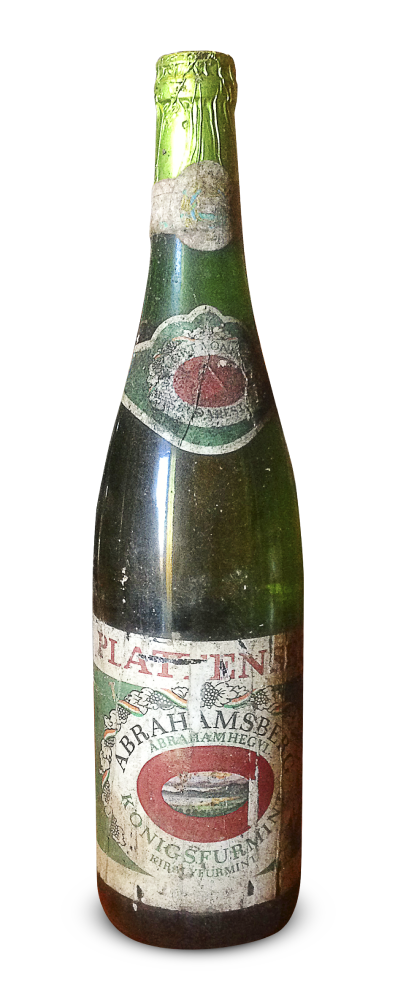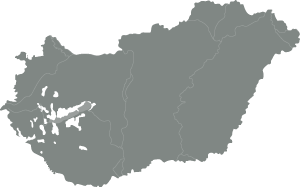Personal opinion:
Gems of outstanding quality that remained from the Socialist era when they were produced in state farms.
At that time people could produce wine, at most, for themselves - bottling and bottle retailing was inconceivable, as this right belonged to the Socialist state.
I never imagined that I would be pleased with these co-ops one day. These are unbelievable relics - time capsules, if you like.
These wines were bottled with the aim of exporting them. As far as I know these made it to the Vatican, the White House in Washington D.C. and the Kremlin in Moscow, etc.
Information:
We do not re-bottle or re-label the Museum wines - we offer them in their original bottles with the original content and original label.
The product picture shows the bottle that remained in the best condition for the sake of recognizability.
The product inventory shows the number of bottles that remained intact.
Unfortunately, not all the labels are undamaged!
Therefore it may happen that the label is damaged (torn, worn or mouldy).
About the Királyfurmint variety:
Királyfurmint is a selected variety of Furmint.
The Furmint (or ‘furmin’ – as it is also referred to in Hungarian) is a grape variety suitable for making white wine.
It is the 8th most common variety in Hungary.
It is the base grape for the sweet Tokaji aszú. The Pontian Balcanica branch belonging to the wine producing varieties (Vitis vinifera) of the Vitaceae family is a typical Hungarian variety and the Hungarian grape that best shrivels for making aszú wine. Its origin is not precisely known – some believe it originates in southern Italy, some think it is the ‘Szerémség’ area located in today’s Croatia and Serbia, but it may even be from today’s Hungary.
Within the variety we differentiate white, red and changing Furmint. The most prevalent, dominant variety is the white Furmint which is a late-ripening type, ripening in the second half of October. Its vine-stock has powerful growth, is not demanding regarding the soil, and is a moderate to good cropper. Its leaves are shallow-lobed, their width and length are practically the same, and they are thick and slightly blistery. Its cluster is loose, medium-sized, its berries are also medium-sized, yellowish green, rusty on their sunny side, with a long stem, slightly thick skin, crunchy, succulent, and when really ripe, they shrivel well. It is prone to Botrytis, but in favourable years the rot is of the noble rot type.
The region and its history:
In the Badacsony area, vines were grown in Roman times, and Emperor Probus had sizeable plantings here. At the time of the settlement of the Magyars in Hungary they already knew about vines and wine. They appreciated areas capable of growing vine. A significant part of the wine region was taken over by the church in the 13th century. In the 18th-19th century the Badacsony vermouth gained a similar reputation to that of the Tokaj aszú in Europe.
During the reconstruction after the phylloxera epidemic, supporting walls were built to prevent soil erosion. New varieties also entered the area. The Szürkebarát was introduced from France by monks. Due to the special soil content it evolved into a typical local variety, the Szürkebarát, which botrytises in good years.
The variety grown in the biggest amount is Olaszrizling that is in better years ripened on the stock longer, and is used to make ice wine or late-harvest hand-selected Olaszrizling. Szürkebarát, Tramini, Sárga muskotály, Rajnai rizling and Chardonnay are also present on the larger lands.
Kéknyelű or " Blue Stem" used to be a characteristic wine of the region. It was significantly confined by the frost damage of the 1980's but is experiencing a revival today, and will be an emblematic wine of the Badacsony region again in the near future.
Badacsony wines are typically full-bodied, fiery, aromatic and mineralized. Traditional wine-making and maturation in wooden barrels are characteristic. Although reductive wine-making and other modern technologies are also spreading, they have not significantly changed the character of the region's wine, yet.
Climate and geography:
Badacsony is the highest mountain in the Tapolca Basin; it stands between two bays of Lake Balaton. The circumference of the almost round mountain is 11km, the diameter of its top region slightly elongated in the north-south direction is 1-1.5km, its highest point is 437.4 metres above sea level. Its hillside is covered up to 280 metres by various loose deposits that are excellent for growing vine, and its soil is basalt-based loess. It is covered by various loose deposits, Pannon clay and Pannon loess, above which there are basalt rocks.
Its climate is mild and balanced with high humidity. Because of the proximity of Lake Balaton the southern hills can also enjoy the sunshine reflected from the surface of the water, and therefore there is a very beneficial microclimate that makes the making of natural dessert wine possible.
The wine region includes the vine cadastre-based first and second class border sections of the following settlements: Ábrahámhegy, Badacsonytomaj, Badacsonytördemic, Balatonrendes, Balatonszepezd, Diszel, Gyulakeszi, Hegymagas, Káptalantóti, Kisapáti, Kővágóörs, Nemesgulács, Raposka, Révfülöp, Salföld, Szigliget, Tapolca.
NAME: MUSEUM. I.
YEAR: 1979
VARIETY: Királyfurmint
WINE REGION: Badacsony
CLASS: Special quality semi-dry white wine
Product of Hungary
Bottle volume: 700ml
Alc. 12%vol


